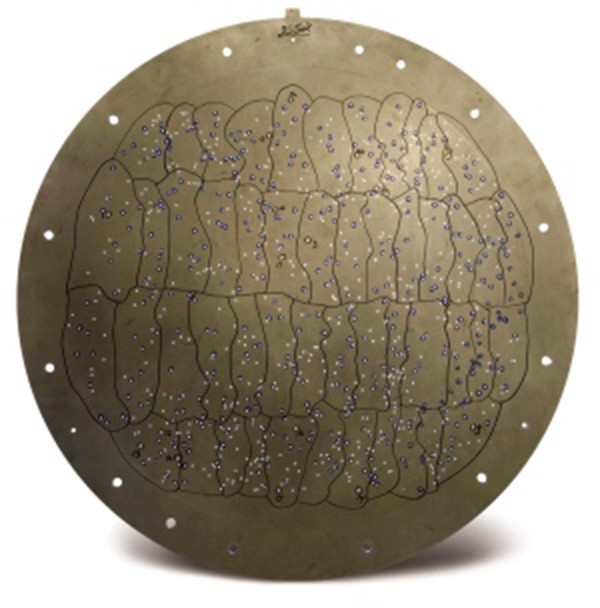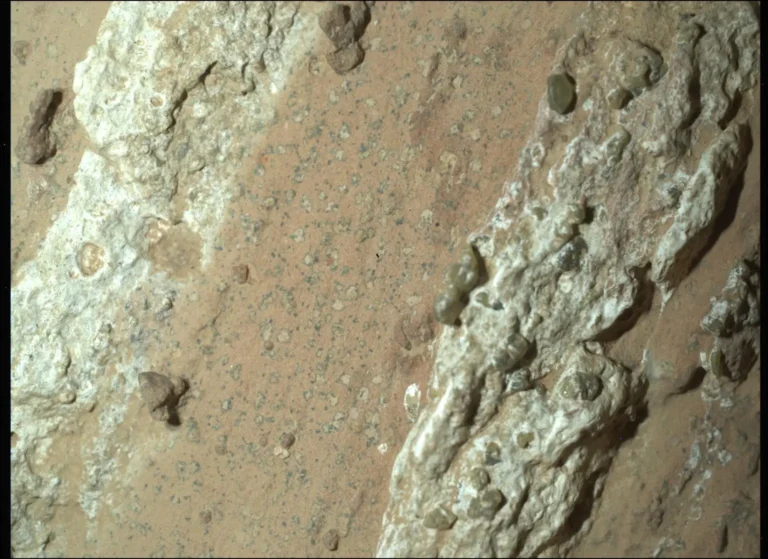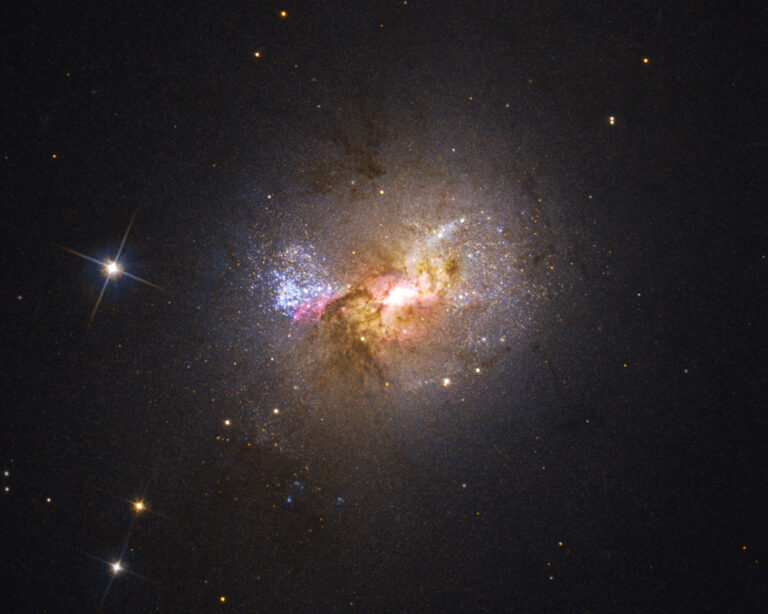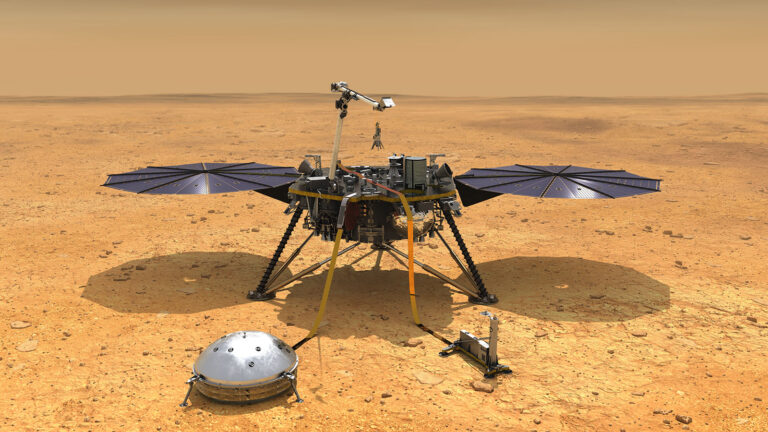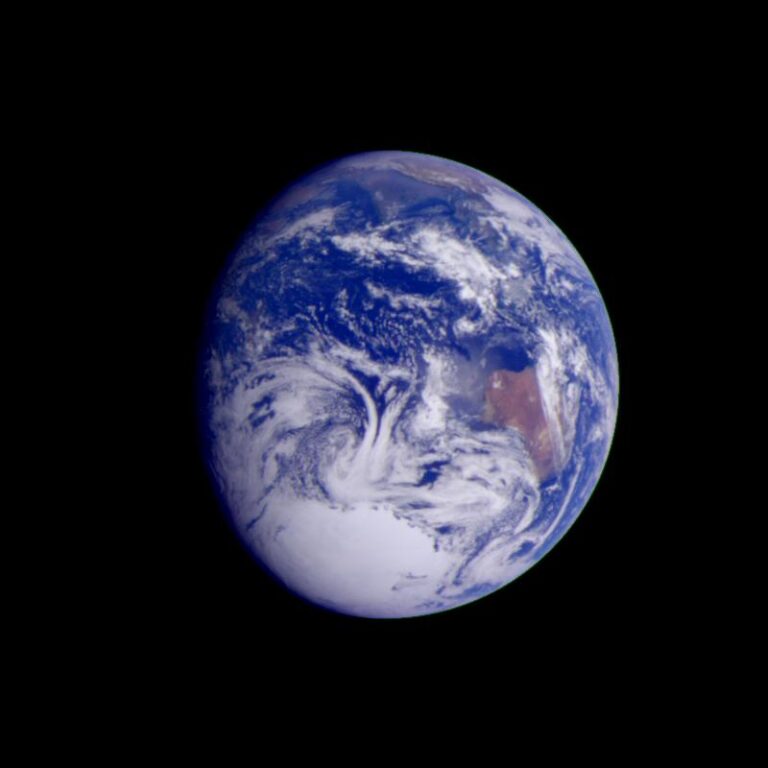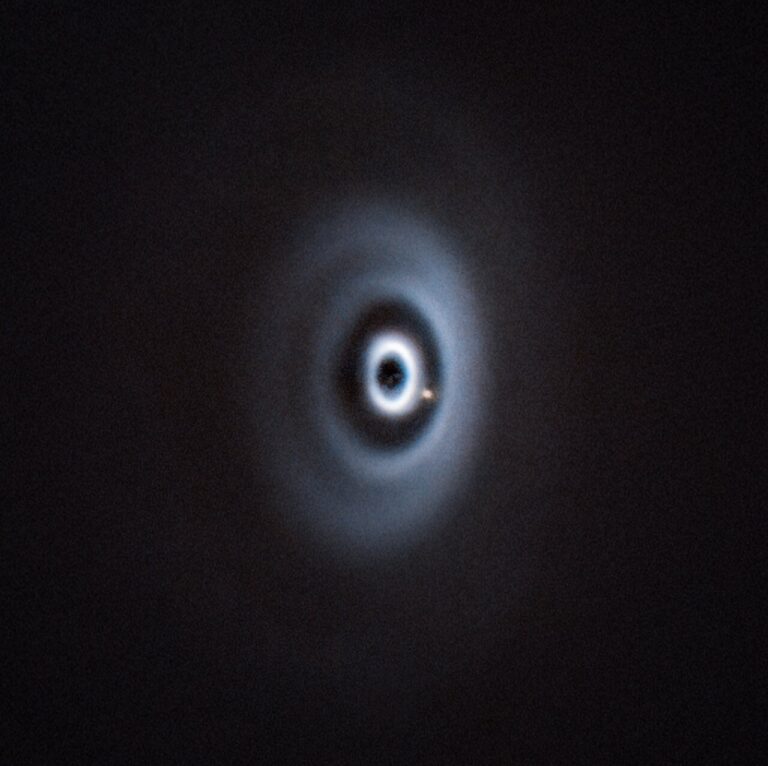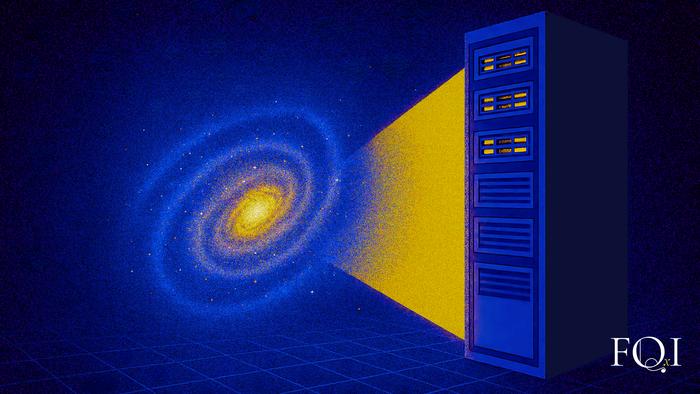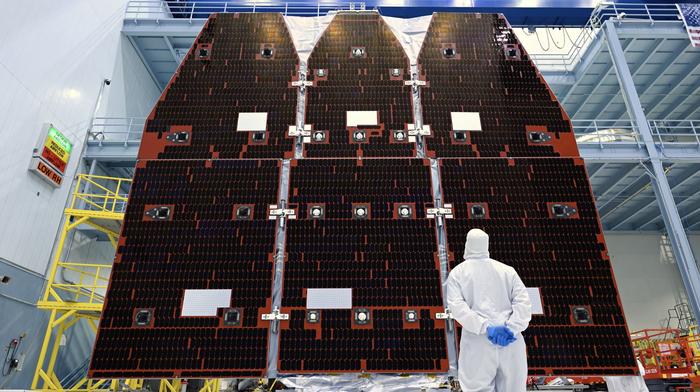Key Takeaways:
The team plugs fiber optic cables into the holes by hand to siphon each galaxy’s light into a spectrograph that can decipher its redshift and deliver a precise position.
Astronomy heralded the historic sky survey’s start in our October 1998 issue, saying it would amass 12 terabytes of publicly available data over the initial five years, which would rival all the content stored by the Library of Congress at the time. From first light to the SDSS III survey completed last year, this revolutionary project has been responsible for the most detailed 3-D maps of the universe.
And beyond the project’s enormous success, it’s also proved to be a harbinger of what’s to come.
But SDSS will soon seem like pushing punch cards into computers. Mathis now heads the operations group for Kitt Peak National Observatory’s 4-meter Mayall Telescope south of Tucson, Arizona, where she oversees instrument changes. And a truly incredible device is on its way. In mere months after its first light, projected for 2018, the new $70 million Dark Energy Spectroscopic Instrument (DESI) will surpass the monumental success of its predecessor.
“This instrument is so powerful that in its first night of observations it will record more data than anyone else has at that kind of cosmological depth,” says DESI Project Director Michael Levi of the Lawrence Berkeley National Laboratory.
But this seemingly massive new survey is actually small in comparison to what’s on the horizon for astronomy. Big collaborations of scientists are set to consume even bigger budgets, forcing organ-izations overseeing older telescopes to make difficult decisions. Within a decade, five separate billion-dollar mega telescopes will open in Hawaii and across Chile, Africa, and Australia.
Astronomers typically get a few nights each year on a large telescope. The 8.4-meter Large Synoptic Survey Telescope (LSST) in Chile will view the entire visible sky twice a week for a decade. On any given night, it will collect more data than SDSS did in its first five years. That data will be immediately available online to anyone.
“We as astronomers are not used to working with machines like this,” LSST scientist Mario Juric of the University of Washington told an audience of SETI Institute astronomers last year. “We were traditionally a really, really data-starved science. It used to be there were many theories, but no way to disprove them. If you had the telescope, that was the key differentiator for making it or not.”
The democratization of astronomy
A century ago, wealthy and generous individuals helped form prestigious institutions that controlled the world’s best telescopes. From Lick Observatory to Lowell, and from Yerkes to Palomar, astronomers with rich benefactors most often were the ones who made discoveries.
Kitt Peak became the birthplace of the National Optical Astronomy Observatory (NOAO), and the 4-meter Mayall Telescope was its flagship. Construction began in 1968, the same year Apollo astronauts first circled the Moon. The idea eventually spread to include a network of American-owned and NSF-supported optical, radio, and solar telescopes across the country. As a result, the United States pushed to the forefront of astronomy.
Fast-forward to present day, and Kitt Peak remains a workhorse for the American astronomer. With its suite of telescopes, the observatory now provides a sum of 800 nights of research each year, with a little less than half of that happening on the Mayall. Still, the newest telescope on the mountain, the 3.5-meter Wisconsin-Indiana-Yale-NOAO (WIYN), is more than two decades old.
The NSF now supports more than a dozen telescopes, with plans to spend billions of dollars for new instruments at some of the world’s darkest sites. Veteran astronomers expect the most ambitious of these projects, LSST, will bring true transformation to the field, similar to that wrought by the Mayall some 50 years ago.
DESI is an order of magnitude improvement over the Sloan survey, but the Large Synoptic Survey Telescope will be like SDSS on steroids. It will record an epic 10-year movie of the entire southern sky out to an incredibly faint magnitude 24.5 — some 16 million times fainter than the naked eye can see. There will be no proposals for use, no competition for time. And this torrent of the cosmos will be unleashed online where absolutely anyone can access it as soon as LSST sees first light in 2022.
“When you think of a telescope, you typically think of something that’s on a mountain, and then an astronomer goes there and sits at a computer and does something, maybe they’ll look at their favorite object and go home,” says Juric. “This is not the way this telescope is going to operate. It’s practically a robot that sits on top of a mountain, and it does its thing.”
The scientific bounty will be unprecedented in astronomy — like when biologists unlocked the genome. The results also will create a new data challenge. For many astronomers, big data will end the already diminished need to actually visit a telescope.
The portfolio review
To pay for new telescopes like LSST, the NSF has decided to let go of some of the old. In 2012, a portfolio review written by astronomers recommended the agency stop funding six telescopes, four of which sit atop Kitt Peak.
The group’s report suggested ending NSF funding for Kitt Peak’s Mayall, WIYN, and 2.1-meter telescope, plus the McMath-Pierce Solar Telescope, run by the National Solar Observatory (NSO). The National Radio Astronomy Observatory (NRAO) operates the other two facilities recommended for closure: the Green Bank Telescope (GBT) in West Virginia, a radio dish that’s the world’s largest single steerable telescope; and the Very Long Baseline Array, a network of 10 radio dishes spread across the country. Combined, the facilities cost $20 million to run each year, or about 10 percent of the NSF’s annual astronomy budget.
The report recommended spending that money on new projects like LSST and handing off the old instruments to other institutions. But that hasn’t been an easy task because the old scopes are still producing new science and universities who might be interested also are pressed for cash.
The report writers said the GBT, the newest of the NSF facilities on the chopping block, was exceptional in its resolution, but its science goals could also be done on other instruments, sometimes with better results. The radio telescope costs around
$8 million per year to operate. That site has rallied support from the state’s congressional leaders, who helped secure $1 million a year for West Virginia University to take a share of GBT time. Scientists also sent rebuttal letters touting the GBT’s unique ability to study pulsars, which are being put to use by an international collaboration using NSF funds to search for gravity waves.
The report also concluded that Kitt Peak’s 1.6-meter McMath-Pierce Solar Telescope, dedicated in 1962 and currently the largest solar telescope in existence, should lose funding “as soon as possible.” The facility has since been reduced to a $200,000 yearly budget, the minimal amount to maintain operations, with just one part-time staff operator.
“The telescope is an older facility, but in the past decade, we’ve averaged about 12 papers per year,” says Matt Penn, an NSO associate astronomer. “If you calculate the price per paper, we’re quite efficient.”
And McMath isn’t alone in its rapid shift to an uncertain retirement. The Big Bear Solar Observatory outside Los Angeles, which saw first light on updated instruments in 2010, and the Dunn Solar Telescope in New Mexico also are slated to close in 2017. The NSF is unloading its Sun-watching scopes in preparation for a new behemoth, the $344 million Daniel K. Inouye Solar Telescope (DKIST) in Hawaii.
This 4-meter is giant for a solar scope and employs adaptive optics, a technological tool typically reserved for astronomers trying to see through Earth’s turbulent atmosphere to far-off suns. Instead, the DKIST will reveal our nearest star in unprecedented detail.
Astronomers hope close-up views of solar surface features will unravel the mystery of our Sun’s magnetism and lead to a new understanding of our active star.
But losing all three current major solar telescopes two years before the DKIST opens will leave a gap in astronomers’ ability to watch the Sun in high resolution and study solar storms. Spacecraft can see the Sun in multiple wavelengths without the filter of Earth’s atmosphere, but they have significantly worse views of our star than their much larger earthly counterparts. And because astronomers also regularly use the McMath at night to observe bright objects like the Moon and Mercury, other unique abilities will disappear without its long eye.
Overall, Kitt Peak actually has had an easier time repositioning itself than most. Instead of closing or reducing operations, negotiations led to the mountain’s two main telescopes getting major overhauls and new alliances of operators that will prime them to make pioneering discoveries.
“Things looked a little dire a few years ago when the NSF portfolio review came out and recommended divestment at Kitt Peak,” says Observatory Director Lori Allen, who took over in 2013. “But through the diligent work of the NSF and the other federal agencies working closely with us, I think we’ve designed a future for both of these 4-meter telescopes.”
In addition to the Mayall’s makeover with DESI, the WIYN will be reborn as a high-tech exoplanet research instrument. The NSF will continue supporting the partnership with new funds from NASA to help answer another defining question of our age: Are we alone? The space agency will pay for an extreme precision radial velocity spectrometer called NN-EXPLORE, which will be put to use studying exoplanets around nearby stars. WIYN also will make follow-up observations of alien worlds seen by NASA’s Transiting Exoplanet Survey Satellite, set for launch in 2018.
Kitt Peak’s 2.1-meter telescope is in the process of being handed off to a consortium of universities for their own research. All the projects still need Congress to approve, but that support looks likely.
“We’ve always been an open-access observatory and rightly so because we were funded entirely by the NSF for that purpose,” Allen says. “Now we’re in a situation where the NSF can no longer fund us at that level. If we want to continue doing frontline science, we have to start doing project science.”
For the Mayall, its antiquated frame actually proved to be its saving grace. With minimal modification, the telescope can support an instrument that weighs as much as four Toyota Land Cruisers.
“The [portfolio review] timing was fabulous because the DESI instrument, it’s big,” Levi says. “It’s the size and weight of a school bus — 10,000 kilograms [22,000 pounds]. It’s heavy. We were actually looking for an older telescope, and the Mayall happens to be perfect because it’s built of so much steel.”
The telescope structure weighs half a million pounds (225,000kg) — two times heavier than the infamous Hughes H-4 Hercules airplane, or “Spruce Goose,” and nearly as much as the world’s largest current passenger aircraft, the Airbus A380. To make way for DESI, engineers must remove the Mayall’s entire top end. “This thing is just massively over-engineered,” Levi says. “It’s insanely well built.”
Another benefit of the Mayall is that it allows this new dark energy survey an unrivaled 8-square-degree field of view. DESI will tear through the night sky like a cosmic cookie cutter, stamping out circles 40 times bigger than the Full Moon with each of its estimated 10,000 observations.
DESI traces its origins to an SDSS project that examined galaxy structure in the early universe through the Baryon Oscillation Spectroscopic Survey (BOSS). Baryons make up most of our universe’s matter in heavy particles like protons and neutrons. BOSS showed that this matter made sound waves and left imprints on the early universe, like pebbles tossed into a pond, creating fluctuations in the cosmic microwave background as the cosmos cooled enough for matter to form. These early fluctuations are called baryon acoustic oscillations, and they led to uniform voids between galaxies.
Astronomers use the oscillations as a cosmic ruler to measure the 3-D positions of objects billions of light-years away.
Whereas BOSS could gather 8,000 objects per night, DESI will knock off 1.5 million. When the survey is complete, it will pinpoint the locations of some 25 million galaxies and quasars — active galactic cores — to produce the most comprehensive picture of our universe ever.
The project is a nod to the big data future of astronomy, as well as what’s possible for aging observatories looking to redefine their relevance in light of new technology.
But when the Mayall is reborn in 2018, it will cease to be an open skies instrument. DESI includes 178 senior scientists from around the world, as well as their postdocs and students. This collaboration will get the first look at data before it’s released. Pending continued congressional approval, the Department of Energy will foot most of the bill, with additional support from the Gordon and Betty Moore Foundation and the Heising-Simons Foundation.
“These large statistical surveys require ferocious quantities of computational power and databases and huge, long-running jobs that are not accessible to an individual,” Levi says. “One person couldn’t do this experiment. One person couldn’t take the data and analyze it. Ten people couldn’t. So now what do you do?”
Tod Lauer has been at the forefront of this culture change. The NOAO astronomer remembers pulling tables out of science journals as an undergraduate and plotting the points with a pencil. He went on to help adapt the first CCD cameras to telescopes, which ultimately led to surveys like SDSS. And while he was still a young scientist, he submitted the first paper using data from the Hubble Space Telescope. He still works with Hubble and several large surveys today, including NOAO’s existing Dark Energy Survey on the Mayall’s twin telescope in Chile.
Lauer says computer skills like learning to visualize data sets and employ machine learning are more important than ever for astronomers. He recently organized a workshop in Tucson called “Tools for Astronomical Big Data” and was shocked when 130 people showed up.
“We’re looking ahead to these tremendously large surveys like LSST, so we can see what’s on the horizon, but with our dark energy survey, we’ve got the problems in front of us right now,” Lauer says. “We need to ride these waves and get the community ready for the next big things.”
Allen, Kitt Peak’s director, thinks her observatory will be ready for those next big things. Tucson was recently selected for the NOAO’s new Data Lab, built to help astronomers utilize observations from the many surveys. And revitalization on the mountain should also carve a niche in this big data era for decades to come.
“We are undergoing a big transition right now from a 100 percent open-access facility to a more project-oriented facility,” she says. “However, I’m pretty confident that a great deal of science will be enabled by these surveys and the scientific importance of Kitt Peak will continue to be significant.”







